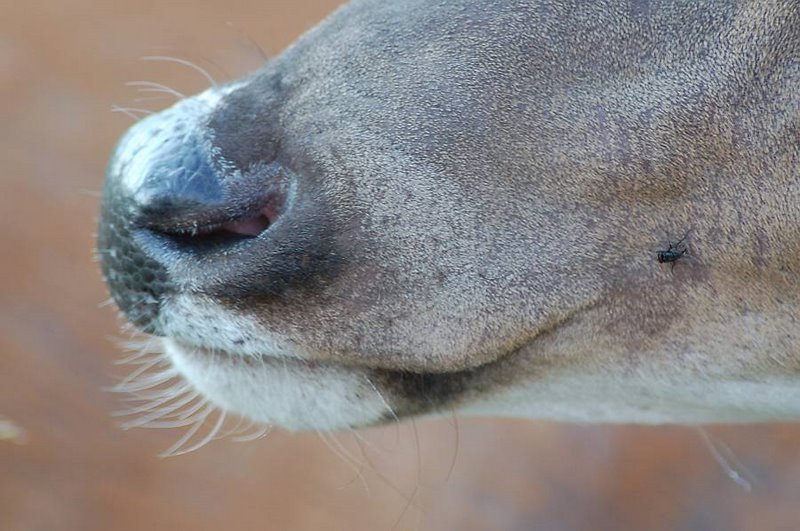Nasal Bots in Deer
Most deer hunters that have harvested white-tailed deer have, unfortunately, found nasal bots. Nasal bots in deer are very common. At first glance, what a hunter encounters looks like a large maggot. And, that’s basically what a nasal bot is. They live in the cavities of the deer’s nose and mouth.
Nasal bots are the larvae of a specific kind of fly that belongs in the genus Cephenemyia. Deer biologists actually find them in a percentage of whitetail deer, particularly when a thorough examination of the head is conducted. From my experience, white-tailed deer in Texas are more likely to have nasals bots than to not have them.
What’s Up, Nasal Bot?
These bots are specific to members of the deer family, which also includes elk and mule deer in the United States. Nasal bots begin life when the adult fly lays a group of eggs around the nose or mouth of a deer. Next, the small larvae within these eggs are then released when the deer licks the eggs.

The warm, wet saliva creates an environment that permits the “hatching” of the immature bots. These larvae then migrate to the nasal passages and occasionally into the sinuses. While there, they molt into larger stages of the maturing larvae.
The mature larvae then move to the deep cavities in the deer’s mouth called the retropharyngeal pouches. The fully matured bots then exit and pupate in the ground until emerging as adult flies. Then, they begin the life cycle all over again.
Are Nasal Bots in Deer A Problem?
To a white-tailed deer, nasal bots are typically only a minor nuisance. The bots do irritate the lining of the nasal passages and move about in the retropharyngeal pouches. In fact, most sneezing and coughing of deer is assumed to be the result of nasal bots. From a clinical perspective, the bots do not cause deer any harm. No sores, infection, nor other problems have been reported, even when the parasites are present in large numbers.
Deer hunters normally encounter nasal bots after the deer they harvested has begun to cool. After the deer dies, the body temperature falls and the bots begin to leave the nasal passages and oral pouches in search of a more suitable environment. These bots then exit through either the nose or mouth. Bots can also move in the wrong direction, or down the trachea (where it is usually warmer), and may appear to be in the body cavity of the deer, even though they are not.
Lastly, nasal bots in deer pose no disease threat to deer hunters. They do not harm the venison. Remember, nasal bots are only found in nasal passages and around the mouth of deer. Deer “infected” with these harmless parasites are safe for human consumption. However, I suspect many unknowing hunters have discarded deer carcasses after observing an ugly larvae crawl out of a deer’s nose.

